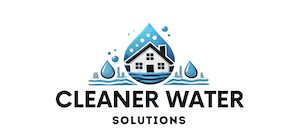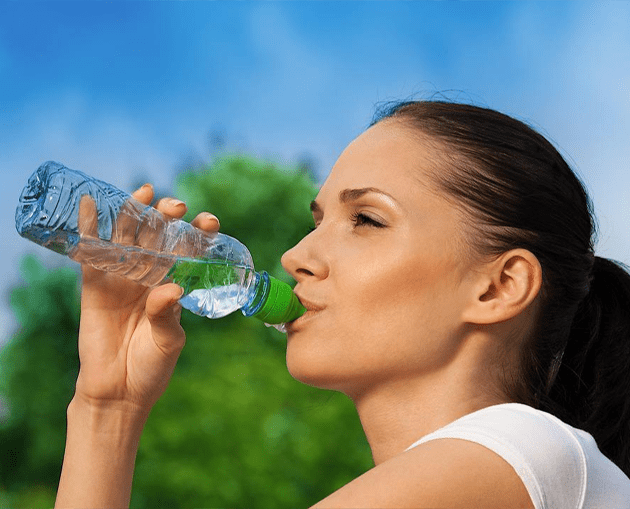When you turn on the tap, you likely assume the water flowing into your glass is safe to drink. After all, it’s treated by your local municipal water system, right? While municipal water treatment systems are designed to provide clean drinking water, the reality is that “treated” doesn’t always mean “clean” or entirely free of contaminants. In fact, there are numerous gaps in the municipal water treatment process that can leave your family exposed to potential health risks. Understanding these gaps is crucial for protecting your household’s health, especially if you have young children or immunocompromised individuals in your home.
How Municipal Water Treatment Works
Municipal water treatment typically involves a multi-step process to remove contaminants from raw water sources like rivers, lakes, and reservoirs. This process generally includes:
Coagulation and Flocculation: Chemicals are added to bind with dirt and other particles in the water, forming larger clumps called “floc.”
Sedimentation: The floc settles at the bottom of the water supply, and the clear water on top is then moved for further treatment.
Filtration: Water is filtered through layers of sand, gravel, and charcoal to remove small particles and some dissolved contaminants.
Disinfection: Chemicals like chlorine or chloramine are added to kill bacteria, viruses, and other pathogens.
Despite these steps, several contaminants can still remain or be reintroduced into your water by the time it reaches your home. Here’s why you need to take a closer look at what’s really in your drinking water.
The Gaps in Municipal Water Treatment
Municipal systems are designed to meet basic federal standards, but these standards don’t guarantee that your water is free from all harmful substances. The Safe Drinking Water Act (SDWA) only regulates about 90 contaminants—far fewer than the thousands of potentially harmful chemicals present in today’s environment. Additionally, aging infrastructure, inadequate testing, and contamination risks after treatment can compromise the water that reaches your tap.
- Aging Infrastructure and Lead Contamination
Issue: One of the biggest threats to safe drinking water comes from old, corroding pipes. Lead, a dangerous neurotoxin, can leach into drinking water through these outdated systems. The Flint, Michigan crisis is a stark example of how aging infrastructure can result in widespread lead contamination.
Health Risks: Lead exposure is especially harmful to children, leading to developmental delays, learning disabilities, reduced IQ, and behavioral problems. The EPA states that there is no safe level of lead exposure for children . - Disinfection Byproducts (DBPs)
Issue: Municipal water systems use disinfectants like chlorine to kill bacteria and viruses, but when these chemicals interact with organic matter in the water, they can form dangerous byproducts known as trihalomethanes (THMs) and haloacetic acids (HAAs).
Health Risks: Long-term exposure to DBPs has been linked to an increased risk of cancer, liver damage, and reproductive issues. According to the Environmental Working Group (EWG), over 250 million Americans are exposed to potentially unsafe levels of these byproducts in their drinking water . - Fluoride Controversy
Issue: Many municipal water systems add fluoride to drinking water to prevent tooth decay. However, recent studies suggest that excessive fluoride exposure may pose health risks, particularly for children.
Health Risks: Overexposure to fluoride can lead to dental fluorosis in children, a condition that causes discoloration and pitting of the teeth. Some research also indicates that excessive fluoride might affect bone strength and cognitive development in children, though these findings are still being debated by health experts . - PFAS: The “Forever Chemicals”
Issue: Per- and polyfluoroalkyl substances (PFAS) are a group of man-made chemicals that are resistant to heat, water, and oil, which is why they’re used in products like non-stick cookware and firefighting foam. Unfortunately, PFAS don’t break down easily in the environment, earning them the nickname “forever chemicals.” Municipal water systems often fail to filter out PFAS.
Health Risks: PFAS exposure has been linked to cancer, thyroid disease, liver damage, and reproductive issues. A study by the Environmental Working Group found that PFAS contamination in U.S. drinking water is far more widespread than initially thought, affecting over 200 million Americans . - Microplastics in Drinking Water
Issue: Microplastics are tiny plastic particles that come from the breakdown of larger plastic debris. They are now commonly found in drinking water sources and are not currently regulated by the EPA. Municipal systems are not equipped to filter out these microscopic contaminants.
Health Risks: While the long-term health effects of microplastics are still being studied, there is growing concern that they may disrupt endocrine function, cause inflammation, or introduce harmful chemicals into the body . - Pharmaceuticals and Hormones
Issue: Municipal treatment systems are not designed to remove pharmaceuticals, hormones, or other chemicals that enter the water supply through human waste and improper disposal of medications. As a result, trace amounts of antibiotics, hormones, and antidepressants have been detected in drinking water.
Health Risks: While the concentrations of pharmaceuticals in drinking water are generally low, there is concern that prolonged exposure, especially in children, could contribute to antibiotic resistance or disrupt hormone function .
Health Risks: Who’s Most Vulnerable?
While these contaminants pose a potential threat to everyone, certain groups are more vulnerable to their effects, particularly:
Infants and Children: Children are still developing, and exposure to even low levels of contaminants like lead or fluoride can have long-term consequences on their health and cognitive development.
Pregnant Women: Contaminants like DBPs and PFAS have been linked to complications during pregnancy, including low birth weight and developmental issues in infants.
Immunocompromised Individuals: People with weakened immune systems may be more susceptible to bacterial contamination or may experience more severe effects from chemical exposure.
What You Can Do to Protect Your Family
Given the potential risks associated with municipal water treatment, it’s important to take extra steps to ensure the safety of your drinking water:
Test Your Water: If you’re concerned about contaminants, start by testing your water. You can purchase home water testing kits or send a sample to a certified lab for a detailed analysis of potential contaminants like lead, DBPs, PFAS, and more.
Install a Filtration System: Consider installing a home water filtration system to remove harmful contaminants. Systems such as reverse osmosis filters, activated carbon filters, or whole-house filtration units can be effective in removing a wide range of pollutants, including lead, DBPs, PFAS, and microplastics.
Use a Water Pitcher Filter: For added protection, use a certified water pitcher filter that targets specific contaminants like lead or chlorine byproducts.
Stay Informed: Keep an eye on your community’s water quality report, which is typically published annually by your local water utility. This report will indicate whether your water meets federal safety standards and if any contaminants have been found.
Conclusion
While municipal water treatment systems play a critical role in providing safe drinking water, they are not foolproof. Aging infrastructure, unregulated contaminants, and byproducts from the treatment process can still pose significant health risks to your family. As a head of household, understanding these risks and taking proactive steps to ensure the cleanliness of your water is key to safeguarding the health and well-being of your family. By testing your water and considering home filtration solutions, you can close the gaps left by municipal systems and enjoy peace of mind knowing your drinking water is truly safe.




